Air Cooled Water Chiller
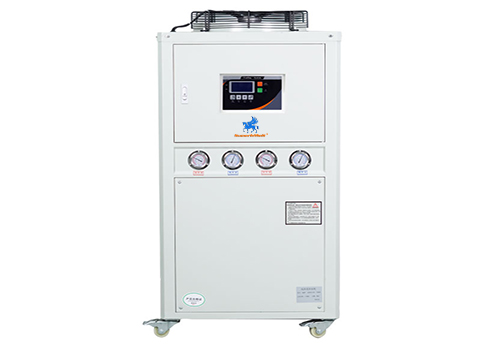
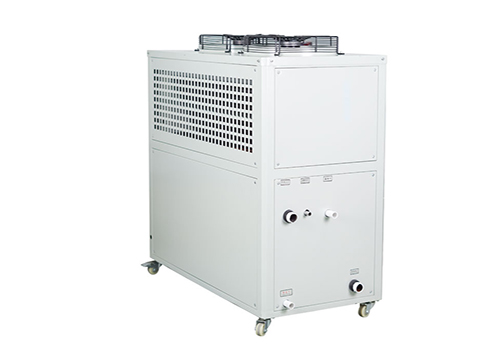

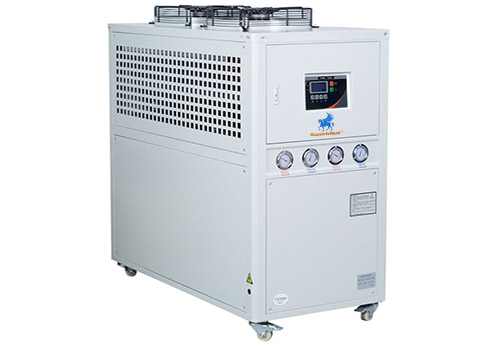

Under different cooling methods, the chiller can be divided into two types: air-cooled and water-cooled. The air-cooled chiller directly takes away the heat of the refrigerant through the forced air flow of the fan. The model is small and movable.
SuperbMelt’s air-cooled chiller is compact, easy to move, and the whole machine has been treated with anti-rust, easy to install and use. Connect to the equipment that needs cooling and start working directly.
Equipped with low-noise motor and high-performance compressor, the cooling quality is high and the machine runs stably. It does not require a water tower device, so is very suitable for use in water-scarce areas and medium industrial plants.
Water Cooled Chiller Parameter
| Model number | SPB-C-3P | SPB-C-5P | SPB-C-8P | SPB-C-10P | SPB-C-15P | SPB-C-20P |
| Cooling capacity | 8.99KW (7742kcal/h 50hz) | 13.9KW (11990kcal/h 50hz) | 21.8KW (18748kcal/h 50hz) | 28.1KW (24089kcal/h 50hz) | 44.15KW (37965kcal/h 50hz) | 59.05KW (50805kcal/h 50hz) |
| Compressor power | 2.25KW(3HP) | 3.75KW (5HP) | 6KW (8HP) | 7.5KW (10HP) | 11.25KW (15HP) | 15KW (20HP) |
| Pump power | 0.37KW | 0.75KW | 0.75KW (Vertical pipe pump) | 1.1KW (Vertical pipe pump) | 1.5KW (Vertical pipe pump) | 1.5KW (Vertical pipe pump) |
| Water tank capacity | 40L | 50L | 110L | 180L | 290L | 290L |
| Dimensions | 1200*520*1260 | 1250*725*1445 | 1330*725*1445 | 1650*720*1500 | 1750*800*1650 | 1850*800*1750 |
| Weight | 160KG | 180KG | 280KG | 350KG | 600KG | 700KG |
Features of Water Cooled Chiller
1. The chiller for cooling induction furnace and casting machine. This serial unit applies to Europe- and America-imported, full-closed, low-noise, high-efficiency scroll compressor with imported digital thermostat.
2. Unit with one, two or three refrigerating loop circuits, which are interchangeable and run independently.
3. Perfect safety protection system and failure electronic signal assure that unit operates without any damage and run safely.
4. Easy installation: All units have been completed and adjusted well, including frozen oil cooling added.
5. Users can directly put it into use by connecting the pipe and circuits, saving debugging time.
Air-cooled chillers are usually used in equipment that generates heat through friction, such as high-power equipment such as melting furnaces, casting furnaces, welding machines, and jewelry manufacturing.It can also be used in the food industry, pharmaceutical industry, etc. that have strict regulations on the storage temperature of raw materials and products.
The selection of the chiller should be based on the rated cooling capacity. The cooling capacity also called the calorific value of the equipment. The cooling capacity should be similar to the calorific value. If the calorific value is greater than the cooling capacity, the temperature of the equipment will rise to achieve cooling effect. Secondly, the cooling capacity cannot be greater than the calorific value, which will cause a waste of resources.
Usually, “Hp” is used to indicate the size of the chiller. For example, if the air-cooled chiller is around 9kw, you can choose a 3p chiller, and proceed sequentially according to this rule. If you don’t know what size chiller is suitable for your equipment, you can consult our sales, and we will provide professional calculation results to help you make a better choice.

2 years warranty
The warranty for our machine is one year longer than the warranty provided by other factories.

Strong service team
We will give response within 24 hours against your problem by our professional engineer.
Why SuperbMelt Air Cooled Water Chiller



Any Question About SuperbMelt Air Cooled Water Chiller
Guide of SuperbMelt Air Cooled Water Chiller
How Dose SuperbMelt Air Cooled Chiller Work?
1.1, Working Principle
When the unit of the air-cooled chiller is running, the heat of the coolant such as cooling water will be absorbed by the refrigerant, and then the evaporator will always generate gas under the action of the compressor, which will be compressed into high temperature and high pressure steam, then refrigerant steam and air heat will be exchanged in the condenser, thereby cooling into liquid, and under the action of the throttling mechanism, it will evaporate again in the evaporator and absorb the heat of the cooling material, continue to circulate.1.2, Composition of Refrigeration System
- Condenser
- Liquid Reservoir
- Filter Drier
- Evaporator
- Thermal Expansion Valve
1.3, Operating Procedures
Step 1: Start Preparation
Check whether the machine is in normal condition, connect the pipelines and wires correctly, and the power supply must meet the regulations. Check that the valves are all in the correct position.
Step 2: Check Power Supply
Turn on the main power supply, check the phase sequence of the equipment power supply, and if the reverse fault light is on, reverse the two-phase power supply and restart the motor.
Step 3: Machine Running
Turn on the water pump, wait for the refrigerated liquid to circulate, then start the compressor and adjust the proper temperature.
Step 4: Turn Off Machine
Turn off the compressor first, then stop the chilled water pump.
How to Choose the Right Air-cooled Chiller?
Industrial chillers are widely used. It plays an important role in many processes that require cooling in industrial production. However, there are many types of chillers. What kind of chiller is more suitable for your factory and achieve the cooling effect you need?
Working Environment
SuperbMelt air-cooled chiller is more compact and does not occupy the location of the factory building. It is more suitable for outdoor or ventilated workshops. If you are in an area where water is scarce, then an air-cooled chiller is best suited as it does not require a large amount of water and directly achieves air cooling by absorbing heat and expelling it.
Power Supply
The standard of industrial power consumption changes according to the regulations of different countries and regions. According to the customer’s region, we can provide corresponding power supplies, such as 440-480V, 380-420V, 280-230V, 50Hz and 60Hz
Control Method
Control precision is also a factor that needs to be considered. The superbmelt chiller has a high level of automatic control, and the precision and quality of refrigeration are also higher. At the same time, automatic control can effectively save energy consumption and reduce costs.
Easy to Operate
The air-cooled chiller is easy to operate and can be used easily after being connected, saving training costs and lower maintenance costs.
Quality of The Compressor
The compressor is an important part of the entire cooling unit. SuperbMelt uses compressors imported from Japan and the United States, with high performance, stable operation and lower noise, which can greatly protect the environment for indoor workshops.
Comparison of Air-cooled Chillers and Water-cooled Chillers
Chillers are divided into two types in terms of cooling methods: air-cooled and water-cooled. The main difference is that the cooling methods are different, and the condensers of the machine structure are also different. The water-cooled is shell-and-tube and the air-cooled is finned. Water-cooled chiller need to work with a cooling tower together, and the air-cooled chiller uses its own fan for heat dissipation.
Cooling System
The air-cooled chiller directly discharges the heat to the outside air through the finned condenser, so the machine is easy to move and does not need to install a cooling tower.
The water-cooled chiller requires the refrigerant to absorb heat and exchange heat with water, and then the water that absorbs the heat will go to the external cooling tower through the water pipe, so it is necessary to build a special working area for the water-cooled chiller.
Equipment Size
The water cooled type needs to be equipped with a fixed cooling tower, so the volume is much larger than the air-cooled type, which is commonly used in some large industrial factories.
While the air-cooled type is small in size, which is more suitable for some small and medium-sized melting, casting, jewelry processing Factories and some scientific research laboratories and so on.
Working Environment
The working environment of the air-cooled chiller needs to be placed in a ventilated workshop or directly outdoors. The water pump can be placed together with the unit, so there is no need to occupy the machine room.
The water-cooled chiller requires a special machine room to ensure the normal operation of the equipment, and the location of the cooling tower also needs to be fixed, which has certain requirements for the area of the factory building.
Cooling Capacity
Compared with the water-cooled type, the cooling capacity of the air-cooled type is small, so the air-cooled type is more suitable for small and medium-sized systems, while the water-cooled type is suitable for large-scale systems.
Some industrial laser equipment, coating equipment, hot bending machines, metal processing and other equipment will use air cooling machine.
Input Costs
The air-cooled chiller is equipped with a water tank and a water pump, the cost is lower and affordability, while the water-cooled chiller is large in equipment and needs to be equipped with a cooling tower, the cost of land occupation must also be considered.
Therefore, the initial investment of the air-cooled chiller is much lower than that of the water-cooled chiller.
FAQ Guide of Air Cooled Water Chiller
- 1. What is an air-cooled water chiller?
- 2. How does an air-cooled chiller work?
- 3. does air cooled chiller use water
- 4. why water-cooled chiller is more efficient than air-cooled chiller
- 5. Which air-cooled chiller is best?
- 6. What is the lifespan of an air-cooled chiller?
- 7. Which is better screw chiller or scroll chiller?
1. What is an air-cooled water chiller?
An air-cooled water chiller is an industrial cooling system that removes heat from a process or equipment and transfers it to the surrounding air. Instead of using a cooling tower like a water-cooled chiller, it relies on fans to blow ambient air across condenser coils to dissipate the heat.
In simple terms, it circulates chilled water (or a water-glycol mixture) through a closed loop to absorb heat from machines, molds, or processes, and then releases that heat into the air.
2. How does an air-cooled chiller work?
An air-cooled chiller works by circulating refrigerant and chilled water in a closed system to remove heat from equipment or processes and release it into the air. The process can be broken down into four main steps:
Evaporation (Cooling Water):
Warm water from the process enters the chiller’s evaporator.
The refrigerant inside the evaporator absorbs heat from this water, lowering its temperature.
The cooled water is then pumped back to the equipment or process.
Compression:
The refrigerant, now in a gaseous state after absorbing heat, is compressed by the compressor.
This raises its pressure and temperature.
Condensation (Heat Release):
The hot, high-pressure refrigerant gas flows into the condenser coils.
Fans blow ambient air across these coils, carrying away the heat and cooling the refrigerant back into a liquid.
Expansion:
The refrigerant passes through an expansion valve, reducing its pressure and temperature, and returns to the evaporator to repeat the cycle.
3. does air cooled chiller use water
Yes, an air-cooled chiller does use water, but only within the internal process loop — not for heat rejection.
Here’s the difference:
Water is used inside the system to absorb heat from your equipment, machinery, or process. This chilled water is then circulated back and forth to keep things cool.
No cooling tower or external water source is needed. Unlike water-cooled chillers, an air-cooled chiller uses fans to blow ambient air across condenser coils to reject heat.
4. why water-cooled chiller is more efficient than air-cooled chiller
A water-cooled chiller is more efficient than an air-cooled chiller because of the way it rejects heat. Here’s why:
- Better Heat Transfer Medium – Water has a much higher thermal conductivity than air, meaning it can absorb and transfer heat more effectively.
- Lower Condensing Temperatures – Cooling towers used in water-cooled systems maintain lower condenser temperatures compared to the ambient air in air-cooled systems, which reduces compressor workload.
- Energy Savings – Because the compressor doesn’t need to work as hard, water-cooled chillers consume less electricity for the same cooling capacity.
- Stable Operation – Water-cooled systems are less affected by hot weather, while air-cooled chillers lose efficiency as ambient temperatures rise.
- Longer Lifespan – Operating at lower pressures and temperatures reduces mechanical stress, often extending equipment life.
5. Which air-cooled chiller is best?
There’s no single “best” air-cooled chiller — the ideal model depends on your specific application, cooling load, operating environment, budget, and maintenance needs. Here are the key factors to consider when choosing the right one, and some product examples that might match different use cases:
What to Look for
| Factor | Why It Matters | Typical Indicators |
|---|---|---|
| Cooling Capacity | Must match your heat load (e.g. plastic molding, laser tube, jewelry casting, industrial machinery) | Rated in tons or kW, flow rate |
| Efficiency & Energy Use | Better efficiency reduces running costs, especially in warm ambient conditions | EER/IPLV, variable speed drives, economizers Norbryhn Equipment+2Tyrkaid+2 |
| Operating Temperature Range | Determines reliability in hot vs. cold climates | Units rated to 40°C+, low ambient cutoffs |
| Noise & Location | Outdoor vs indoor installation and any noise restrictions | Sound ratings, fan design |
| Maintenance and Reliability | Low maintenance and stable operation reduce downtime | Quality compressors, filtration, serviceability |
| Controls & Automation | Ease of use, diagnostics, remote monitoring | Touchscreen, BMS connectivity, load optimization |
| Portability & Size | Critical for mobile setups or limited workspace | Physical footprint, plug-and-play units |
6. What is the lifespan of an air-cooled chiller?
On average, an air-cooled chiller has a lifespan of 15–20 years, depending on the quality of the unit, operating conditions, and how well it’s maintained.
Well-maintained chillers (regular cleaning of condenser coils, checking refrigerant levels, timely filter replacement, and routine inspections) often reach the upper end of that range or longer.
Poorly maintained chillers may fail within 8–12 years due to issues like coil fouling, compressor strain, or corrosion.
Environmental factors (such as very hot climates, dusty outdoor air, or corrosive coastal conditions) can shorten lifespan if the chiller is not properly protected.
Some industrial-grade chillers from reputable manufacturers can even exceed 25 years of reliable operation when maintained according to OEM guidelines.
7. Which is better screw chiller or scroll chiller?
The choice between a screw chiller and a scroll chiller depends on cooling capacity, application, and budget. Each has its strengths:
Screw Chiller
Best for large-scale applications (industrial plants, data centers, large commercial buildings).
High capacity range: 100–1,000+ tons.
Continuous operation: Handles long running hours efficiently.
Durability: Longer lifespan with fewer moving parts compared to reciprocating compressors.
Higher initial cost and maintenance expenses.
Scroll Chiller
Best for small to medium applications (offices, hotels, hospitals, small factories).
Capacity range: Usually up to 200 tons.
Lower cost: More affordable upfront and easier to maintain.
Low noise and vibration: Good for comfort cooling.
Limited scalability: Not ideal for very large cooling loads.
Shorter lifespan than screw chillers under heavy-duty use.
In summary:
Choose a screw chiller if you need large capacity, high efficiency, and 24/7 operation.
Choose a scroll chiller if you want a cost-effective, quiet solution for smaller loads.
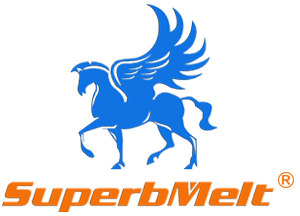
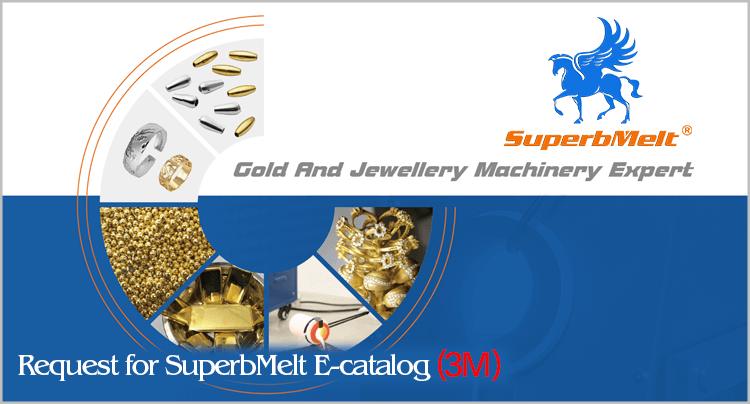
 © Copyright 2008-2021 Superb Electromachinery Co., Limited
© Copyright 2008-2021 Superb Electromachinery Co., Limited